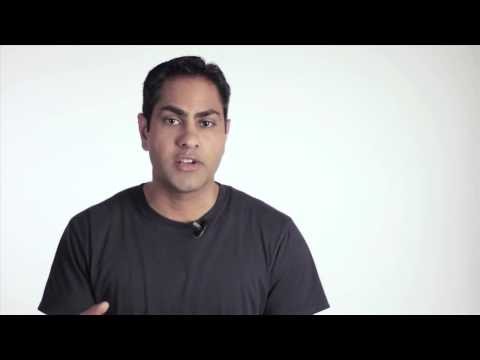Five Things to Consider Before Consolidating Retirement Accounts
Post on: 1 Апрель, 2015 No Comment

Some people have retirement funds in too many accounts. In part, this is a function of a mobile workforce in which workers change jobs every few years. Another cause is the complicated U.S. tax code, which has offered savings incentives for accounts with different qualifications and characteristics through the years.
As a result, many people have retirement nest-eggs spread among 401(k)s and individual retirement accounts (IRAs) in a number of financial and sponsoring institutions, making it difficult to track portfolio performance, asset allocation, and diversification. Keeping money in all those accounts also can be costly, as some accounts charge annual fees of $100 or more.
Consolidating your retirement money into as few accounts as possible is an admirable goal. As is often true with taxes, though, its not easy to accomplish unless you know the rules. Here are some things you need to know about before proceeding.
1: Not All Accounts Can Be Combined
Most but not all retirement funds can be accumulated into an IRA account. The exception is that accounts funded with after-tax dollars, such as Roth IRAs and Roth 401(k)s, cannot be consolidated into tax-deferred accounts, such as employer-sponsored plans and traditional IRAs.
Although holdings in employer-sponsored plans (including 401(k)s, SEP-IRAs and SIMPLE IRAs) can be rolled over into traditional IRAs, the opposite generally is not true. David M. Williams, CFP, a Memphis-based business consultant and investment adviser with Wealth Strategies Group, advised that 401(k)s can be funded only with money and assets from other 401(k)s and employer-sponsored plans. Although the tax laws allow employers to set up separate IRA accounts inside their qualified plans, most do not offer this feature because IRA funds cannot be commingled with qualified money within the plan, which increases administrative duties, Williams said.
Employees who need to take their money out of an employers plan before they have an account in another qualified plan can use a conduit IRA to park the money or assets temporarily. These accounts are used frequently by people who are between jobs or who have not yet become eligible for their new employers retirement plans. Holdings in a conduit IRA can be rolled over into a 401(k) as long as they are not comingled with holdings that dont come from a qualified employer plan.
2: 401(k)s and IRAs Are Different
When choosing between a 401(k) and an IRA for your consolidation account, there are advantages and disadvantages to each. Generally, 401(k) plans can give account holders better access to their money, while IRAs opened with large financial institutions tend to offer a wider array of investment options. If you need to preserve your future ability to take a loan from your retirement assets, you should consolidate into a 401(k) because you cant take loans from IRAs, notes Toni R. Harris, a financial adviser with VALIC Financial Advisors in Houston.
Alison A. Farrin, president of Innovative Pension Strategy and Design in Poway, Calif. prefers seeing accounts consolidated into an active 401(k) plan. Most up-to-date plans today allow rollovers in and out, in-service distributions at age 59, loans and hardship distributions, giving you the most access to funds and the best opportunity for professional money management, she said. This option can be particularly advantageous for a self-employed person who sets up a solo 401(k) plan with flexibility for pre-retirement fund access as well as professional management, according to Farrin. However, she cautioned that 401(k) plans sponsored by businesses with employees are subject to more rules than individual 401(k)s. Once a business owner hires an employee, the plan must meet all the rules, she said.
Edward Collins, founder and wealth adviser at Artisan Wealth Management in Lebanon, N.J. recommends consolidating retirement assets in a self-directed IRA because of the flexibility these accounts give investors in the universe of investment options available. He advised investors who plan to go this route to do your research and/or work with a seasoned professional to ensure that you do it correctly. Mistakes can be costly and difficult, if not impossible, to correct.
3: The IRS May Get Some of Your Money

Generally, its better to have your account rolled over directly from one plan to another. If you withdraw the money instead, it is treated as a distribution and the plan administrator is required to withhold 20 percent for income taxes. Williams noted that even if you deposit the full amount into another retirement account within 60 days and treat it as a rollover, you are making an interest-free loan to the government until your tax return is filed. In addition, you will have to deplete other liquid assets in order to make up for the 20 percent withheld, he said.
4: Some Assets Shouldnt or Cant Be Consolidated
In some cases, rolling assets over into your consolidation account is not the best option. If you hold appreciated company stock in your 401(k), you may benefit from taking an in-kind distribution of the stock rather than rolling it over. While this removes this holding from your tax-deferred retirement account, you may pay less tax on it in the long run. Even though you would have to pay tax on your original investment in the stock as ordinary income in the year of distribution, the net unrealized appreciation (NUA) would be taxed as long-term capital gain when the security is sold.
Further, there may be restrictions on ownership of private-company stock that wont allow you to hold that investment in an IRA or another companys 401(k). In these cases, youll want to consider what role that stock is playing in your overall portfolio before deciding whether to roll it over. If you decide to keep it, you may be able to take an in-kind distribution and pay taxes on the NUA at the lower long-term capital gain rate later on.
5: Account Consolidation Can Cost Money
While one of your goals in consolidating retirement accounts may be to save money on account fees, you need to be aware of the exit fees you might incur in the process. Some financial institutions impose fees when you close an account or roll assets over to another institution. Further, some of your holdings may be back-loaded, and if you have held them for a short time, you may have to pay a load if you liquidate them and roll cash over into the new account.
If you are moving to a new financial institution or consolidating a large sum into one of your current accounts, your financial institution may offer incentives to attract your business. Investigate the fees thoroughly and understand not only what consolidation will cost you in the future but also what youll pay in the process.














